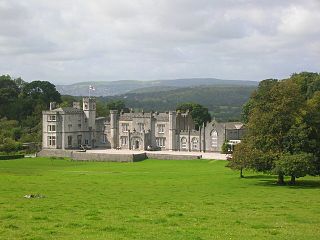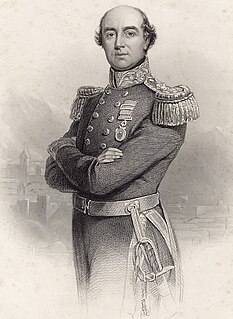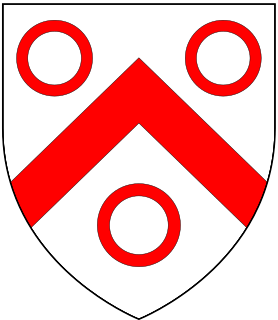Baron Ravensworth, of Ravensworth Castle in the County Palatine of Durham and of Eslington Park in the County of Northumberland, is a title in the Peerage of the United Kingdom.

The title Marquess of Halifax was created in the Peerage of England in 1682 for the George Savile, 1st Earl of Halifax.
There have been two baronetcies created for persons with the surname Berkeley, both in the Baronetage of England.
There have been five baronetcies created for people with the surname Napier, three in the Baronetage of England, one in the Baronetage of Nova Scotia and one in the Baronetage of the United Kingdom. As of 2014 two of the creations are extant.
The Armine Baronetcy, of Osgodby in the County of Lincoln, was a title in the Baronetage of England. It was created on 28 November 1619 for William Airmine, subsequently Member of Parliament for Boston, Grantham and Lincolnshire. The second Baronet represented Cumberland in Parliament. The title became extinct on the death of the third Baronet in 1668.

There have been six baronetcies created for persons with the surname Middleton, four in the Baronetage of England, one in the Baronetage of Great Britain and one in the Baronetage of the United Kingdom. One creation is extant as of 2008.

There have been twenty baronetcies created for persons with the surname Williams, eight in the Baronetage of England, three in the Baronetage of Great Britain and nine in the Baronetage of the United Kingdom. Only five of the creations are extant as of 2017..
The Selby family is a prominent and prolific family in the English gentry that originated in Selby, Yorkshire, but largely settled in Northumberland and County Durham. At various points through history, the family owned Biddlestone Hall and Twizell Castle in Northumberland in addition to the manor houses Ightham Mote in Kent and at Beal, Northumberland. The family had two baronetcies; the Selby and the Selby-Bigge but both are now extinct.
There have been five baronetcies created for persons with the surname Green, one in the Baronetage of England, one in the Baronetage of Great Britain and three in the Baronetage of the United Kingdom. Only one creation is extant as of 2007.
There have been seven baronetcies created for persons with the surname Wood, one in the Baronetage of England, one in the Baronetage of Nova Scotia, one in the Baronetage of Great Britain and four in the Baronetage of the United Kingdom.

There have been two baronetcies created for persons with the surname Goring, both in the Baronetage of England. The second creation came into the family through a special remainder in the patent creating the baronetcy. Only the latter creation is extant as of 2008.

There have been six baronetcies created for members of the Corbet family, four in the Baronetage of England, one in the Baronetage of Great Britain and one in the Baronetage of the United Kingdom. All creations are extinct. The recipients were descendants of the ancient Norman family of Corbet which held substantial estates in Shropshire including Wattlesborough, Caus Castle, Moreton Corbet Castle and Acton Reynald Hall.

There have been two baronetcies created for members of the Barkham family, both in the Baronetage of England. Both creations are extinct.

The Pocock Baronetcy, of Hart in the County Palatine of Durham and of Twickenham in the County of Middlesex, was a title in the Baronetage of the United Kingdom. It was created on 18 August 1821 for George Pocock, Member of Parliament for Bridgwater. He was the son of Vice-Admiral Sir George Pocock. The title became extinct on the death of the fourth Baronet in 1921.
The Ellys Baronetcy, of Wyham in the County of Lincoln, was a title in the Baronetage of England.

There have been seven baronetcies created for persons with the surname Herbert, three in the Baronetage of England, one in the Baronetage of Ireland and three in the Baronetage of the United Kingdom. All creations are extinct.

Sir Patricius Curwen, 1st Baronet of Workington Hall, Cumberland was an English landowner and politician who sat in the House of Commons of England from 1640 to 1643 and from 1661 to 1664. He supported the Royalist side in the English Civil War
There have been two baronetcies created for persons with the surname Buswell, one in the Baronetage of England and one in the Baronetage of Great Britain. Both creations became extinct on the death of the first holder.
There have been two baronetcies created for members of the Cambell family, both in the Baronetage of England. Both creations are extinct.
There have been two baronetcies created for persons with the surname Pickering, one in the Baronetage of Nova Scotia and one in the Baronetage of England. Both creations are extinct.









